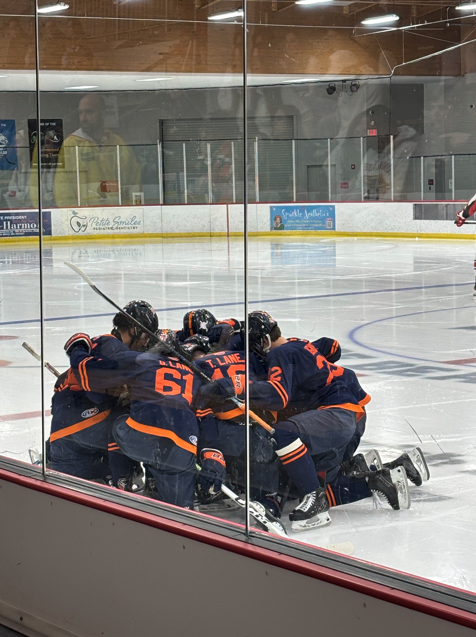One minute before the bell rings, the warning hallway music begins to sound. Your next class is on the third floor, but you’re on the second. The elevator, however, is on the first. It will make a trip from there to the fourth, then down to the third, back up to the fourth, down to the second, and finally, it will be able to take you to the third. You left class three minutes before the bell rings, as permitted, but this isn’t enough time to accommodate all the trips the elevator must take in a given passing period. You will be late for class, again.
According to a 2018 disability status report by Cornell University, 1.3 million students aged 16 to 20 in the United States have some form of physical disability. These disabilities vary in severity, mobility and permanence. For many of these students, their only mode of getting up and down stories of a building are elevators.
At Oak Park and River Forest High School, students who need to use the elevator must obtain an elevator pass, which requires a physician’s written order indicating the necessity of elevator use. These passes are limited to students with either temporary or permanent disabilities.
According to the Illinois Report Card, the number of disabled students appears to be rising. In 2020, out of 3,393 OPRF students, 556 had disabilities, making up 16% of the total student body. However, this percentage has grown in recent years. By 2022, 922 of 3,329 students had disabilities and in 2023, 917 of 3,259 students were identified as having disabilities. There are currently 3,226 students enrolled at OPRF, per the Illinois Report Card. Of that total, 942 have permanent disabilities, nearly 30% of the student population. Noting this trend, OPRF should take steps to accommodate and support its expanding disabled student population.
While it’s not clear that all of OPRF’s students with disabilities need elevators, it is significant that the school has only five elevators, of which only one reaches the fourth floor, meaning that many students face difficulty navigating the building. The elevator that goes to the fourth floor was constructed as part of Project 1, which was completed in 2023. These limitations contribute to the exclusion and marginalization of students with disabilities due to the building’s design. Students with elevator passes are allowed to leave class up to three minutes before the bell rings, which often leads them to miss instructional time.
Moreover, these three minutes may not be enough for some students to reach the elevator in time or secure a spot before the crowd of other elevator riders arrives. Often, students are forced to wait for the next elevator to arrive once the elevator fills up, again causing them to be late to class. Further, many students who are semi-mobile then choose to take the stairs, which can be dangerous.
In February, I sustained a mild knee injury, which limited my mobility and required me to rely on the elevators. While I am fortunate that this injury was temporary, it opened my eyes to the challenges faced by the OPRF community of students with physical disabilities.
According to the Humanity and Inclusion organization, nearly 240 million children worldwide live with disabilities, many of whom face barriers to education. For example, students in wheelchairs or crutches often cannot access certain areas of the school without ramps or elevators. These limitations enable disillusionment from education as a whole. As reported by the United Nations Educational, Scientific and Cultural Organization (UNESCO), children with visual, hearing, physical or intellectual disabilities are two and a half times more likely not to attend school at all.
With Project 2 underway to construct an elevator that complies with accessibility requirements, I’m optimistic that OPRF is moving towards greater inclusion for students with disabilities. However, until these changes are implemented, the current challenges will continue to impact students’ education and well-being.













